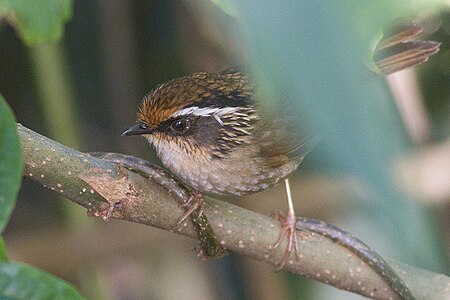Khonoma Nature Conservation and Tragopan Sanctuary
| Khonoma Nature Conservation and Tragopan Sanctuary | |
|---|---|
| KNCTS | |
 Location in Nagaland, India | |
| Location | Kohima District, Nagaland |
| Nearest city | Kohima |
| Coordinates | 25°37′36″N 94°00′08″E / 25.6267°N 94.0021°ECoordinates: 25°37′36″N 94°00′08″E / 25.6267°N 94.0021°E |
| Area | 25 square km |
| Governing body | Government of India, Government of Nagaland |
Khonoma Nature Conservation and Tragopan Sanctuary or KNCTS is a conservation reserve and a protected area in the Kohima District of the state of Nagaland in India. It is about 18 kilometres (11 mi) west of the capital of Nagaland, Kohima. The total area notified under this park is around 25 square kilometres (9.7 sq mi); some of villages and hamlets are adjacent to this park: Khonoma, Mezoma and Dzüleke.
Geography[]
This park lies at the extension of Barali range; the mountain range complex of north-east India and the undisturbed primary virgin forest is a place for some of the range restricted avian fauna. KNCTS is an Important Bird Area; under criteria A1 (threatened species) and A2 (range restricted species)[1] with area code IN423.[2]
Natural history[]
Ecoregions[]
The sanctuary includes portions of three ecoregions:[1]
- Himalayan subtropical broadleaf forests
- Northeast India-Myanmar pine forests
- Chin Hills-Arakan Yoma montane forests
Fauna[]
Birds some of the exotic species from North-east India are present in this wildlife sanctuary; like Blyth's tragopan, Mountain bamboo partridge, Crested Finchbill, Assam laughingthrush, Striped laughingthrush, Spot-breasted scimitar babbler, Flavescent Bulbul, Naga wren-babbler are to name few. [3]

Green cochoa (Cochoa viridis)

Assam laughingthrush (Trochalopteron chrysopterum)

Rusty-capped fulvetta (Alcippe dubia)
Mammals like Binturong, Serow, Jungle cat, Barking Deer, Gayal, Pallas's squirrel, Himalayan striped squirrel can be seen in this park.[3]
Though deforestation and poaching was a major threat for nature and wildlife in Nagaland; however Khonoma may be considered one of the safest place for wild birds and mammals. Community conservation played a major role in protecting the biodiversity of the area.[4]
References[]
- ^ a b "Important Bird Areas in India - Nagaland" (PDF). ibcn.in. Archived from the original (PDF) on 28 March 2019. Retrieved 28 May 2021.
- ^ "Important Bird Areas (IBAs) in India". wiienvis.nic.in. 16 February 2016.
- ^ a b "Fauna – Status of Environment related issues: Nagaland ENVIS Centre, Ministry of Environment and Forests, Govt. of India". nagenvis.nic.in. 27 May 2017. Archived from the original on 27 May 2017. Retrieved 28 May 2021.
- ^ "Khonoma Village – Kalpavriksh". kalpavriksh.org. Retrieved 11 June 2020.
External links[]
- Wildlife sanctuaries in Nagaland
- Protected areas of Nagaland
- Kohima district



